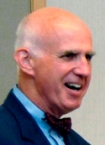May 17, 2012
Congress Tees up Budget Debate While Advocates Play Ball
Congress is going through the beginning throes of the 2012 legislative session with very little energy devoted to its most basic responsibility: the appropriation of funds necessary to exercise the functions of the federal government. The House has passed a budget, devised by Budget Committee Chair Rep. Paul Ryan (R-WI), that reduces discretionary spending for the current budget year below the $1.047 trillion cap determined by the Budget Control Act—the bipartisan deal to raise the debt limit. That’s sure to set up another partisan split this year that will make a 2013 budget deal before the November elections nearly impossible. What’s more, the Ryan budget claims that federal arts funding “can no longer be justified” with activities that go “beyond the core mission” of the federal government.
Meanwhile, Ryan’s counterpart across the Hill, Sen. Kent Conrad (D-ND), chair of the Senate Budget Committee, has put out his own budget proposal in the form of the Simpson-Bowles plan, conceived by the president’s deficit reduction commission two years ago. The plan, a combination of spending cuts and tax increases, has never faced a vote in either chamber of Congress. Last month, however, a bipartisan group of House members composed of moderate Republicans and Democrats—including Rep. Mike Simpson (R-ID), who chairs the Interior Appropriations Subcommittee responsible for National Endowment for the Arts funding—submitted a budget plan built on the Simpson-Bowles ideas. It went nowhere. The divide between the two parties and the two sides of Capitol Hill remains in place.
Congressional staffers are candid about the prospects for appropriations action this year: there will be none by the October 1 start of the new fiscal year. Funding allocations are tight. Appropriators are challenged by the need to strike a balance between those legislators who insist on cutting spending and those who insist on saving funds for special programs. It’s often the same legislators making dual demands on the funding outcome. That makes the work of devising a bill all the more problematic.
In the meantime, advocates are meeting with their elected officials, making their presence known, explaining how their programs work and ensuring that the voice from back home resounds when Congress eventually gets around to voting on appropriations for the arts and the whole run of federal spending.
In this Issue
State to State
- New Jersey: Marketing the Arts
- Delaware: Promoting the Value of Arts Education
- Kentucky: Facilitating Fund-raising On-line
- Mississippi: Harnessing the Power of Design Thinking
Legislative Update
Executive Director's Column
Research on Demand
SubscribeSubscribe
×
To receive information regarding updates to our newslettter. Please fill out the form below.

